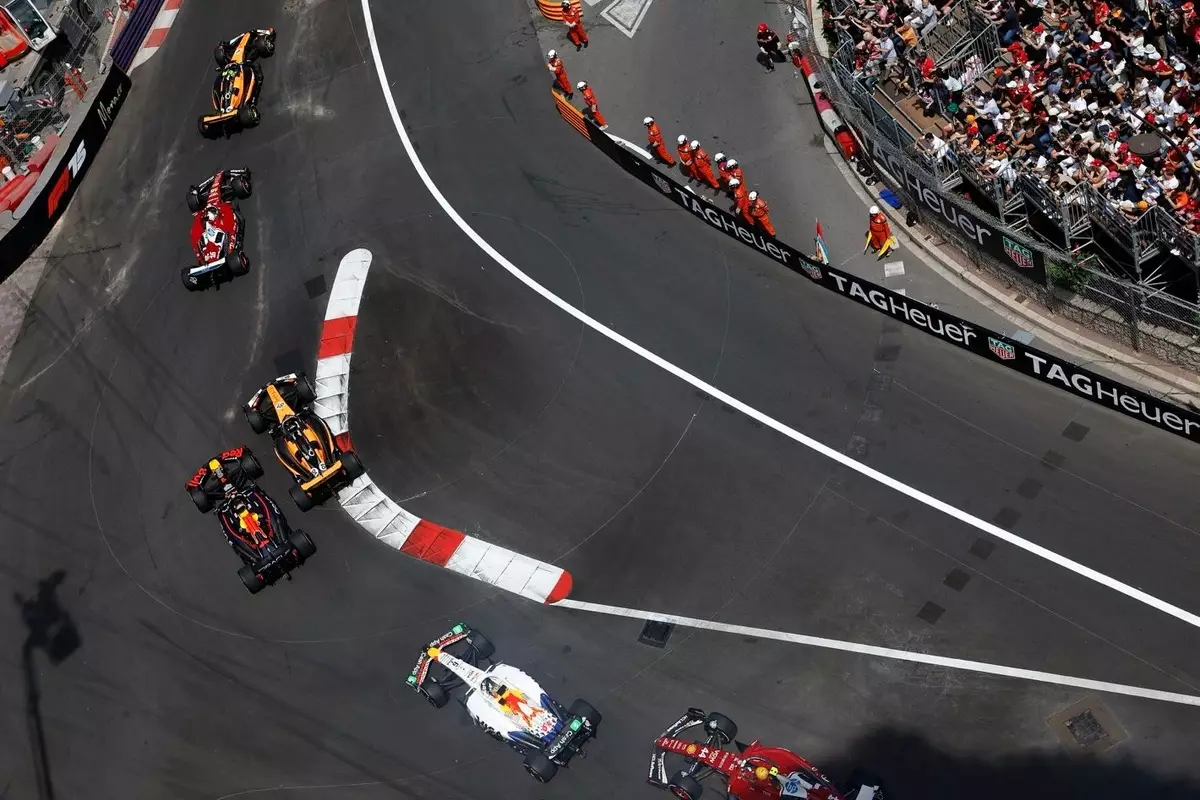The Monaco Grand Prix, an iconic event in the Formula 1 calendar, has recently drawn criticism for its predictable racing format. George Russell, the Mercedes driver, voiced strong opinions about the need for significant changes to the traditional setup after a disappointing race experience. He argued that despite Formula 1 and the FIA’s attempts to introduce a new tire strategy aimed at enhancing competitive dynamics, the outcome was far from what fans and drivers had hoped for. The race, instead of being revitalized by the two-stop rule, ended up mirroring previous years, with little reshuffling among the front-runners.
Russell’s frustrations centered on the ineffectiveness of the experimental rules and the strategic maneuvers that saw drivers deliberately slow down to aid their teammates. This “team tactic,” often referred to as “parading,” contributed to the monotonous procession that fans dread. While this tactic might benefit team scoring, it does a disservice to the spirit of competition, leaving individual drivers like Russell trapped behind slower competitors with little recourse.
The Feast of Qualifying Versus the Famine of Racing
George’s candid reflections on the event underline a stark reality—the essence of racing seems to dwindle in Monaco. He lamented that while qualifying sessions generate thrill and anticipation, the race itself does not mirror that excitement. The idea of splitting the event into a qualifying race on Saturday and the main event on Sunday is one worth considering. Such a model could prioritize individual driver skills and strategies more than the current format allows. Both races would provide points and accolades, creating a championship that reflects true competitive merit rather than pure team orchestration.
In a sport where qualifying is increasingly becoming the highlight, Russell’s suggestion to reward qualifying performances with tangible points raises an intriguing question about the sport’s direction. Should fans be watching to see the fastest car over a single lap, or are they witnessing a strategic dance of drivers trying to assist their teammates—a spectacle that often lacks the drama authentic racing promises?
Rethinking Race Structure in Tight Corners
The narrow streets of Monaco are equally part of the allure and the limitation of the Grand Prix. The track, which will soon celebrate its 100th anniversary, showcases the beauty of Formula 1 racing but also exposes its weaknesses. The layout makes overtaking almost impossible, leading to a race where the best drivers may find themselves stymied by the design. Russell’s remarks about easier manipulation of slower cars highlight a fundamental issue: the very structure of the Monaco circuit may need a radical overhaul to welcome more exciting and competitive racing.
The suggestion that even an F2 car could hold up an F1 vehicle on these streets begs for an examination of how racing tracks should evolve. Fan experience hinges on sensational overtakings, nail-biting strategy changes, and unpredictable results, all of which seem increasingly difficult to achieve under Monaco’s existing framework. Russell’s stark realization that driving ineffectively is “easy” here implicates not just the regulations but also the design of the race itself.
Adapting to a New Era in F1
As Formula 1 shifts into a new era with advancements in technology and a growing fanbase, the Monaco Grand Prix must adapt or risk becoming a relic. Russell’s candidness reflects a broader sentiment among drivers and enthusiasts: a clamor for innovation. While wet races in recent years brought sporadic excitement, they should not be the sole saviors of a circuit that has so much potential for exhilaration and unpredictability.
Drivers like Russell want to race and embrace their skills versus their machines. By championing a more free-flowing style of racing—for example, with fewer constraints under the current rules—F1 could revitalize the Monaco Grand Prix into the captivating event it is meant to be. A fresh approach could make for a more gripping spectacle, where the essence of competition returns to the forefront, breaking free of the stagnation that has overshadowed this legendary race.
George Russell highlights the urgent need for change in the Monaco Grand Prix’s structure. His insights pave the way for a future where innovation trumps tradition, preserving the race’s legacy while ensuring that new generations of fans and drivers can cherish the thrill of competition in one of the world’s most prestigious racing events.


Leave a Reply